Kimchi stew is one of those dishes that’s a little bit sour, sweet, savory, and spicy, hitting multiple flavor notes in one bite! Don’t be deceived by the stew’s red color because this recipe is pretty mild and low on the spicy charts. Most kimchi stew recipes are easy and quick to make. However, if you’re looking for a challenge and deeper flavors, I highly recommend giving this recipe a try! The pork ribs require time to cook until soft but provide an immense flavor that makes up for the long cooking time. My husband (a kimchi hater) approves of this recipe, and I’m sure you will too!
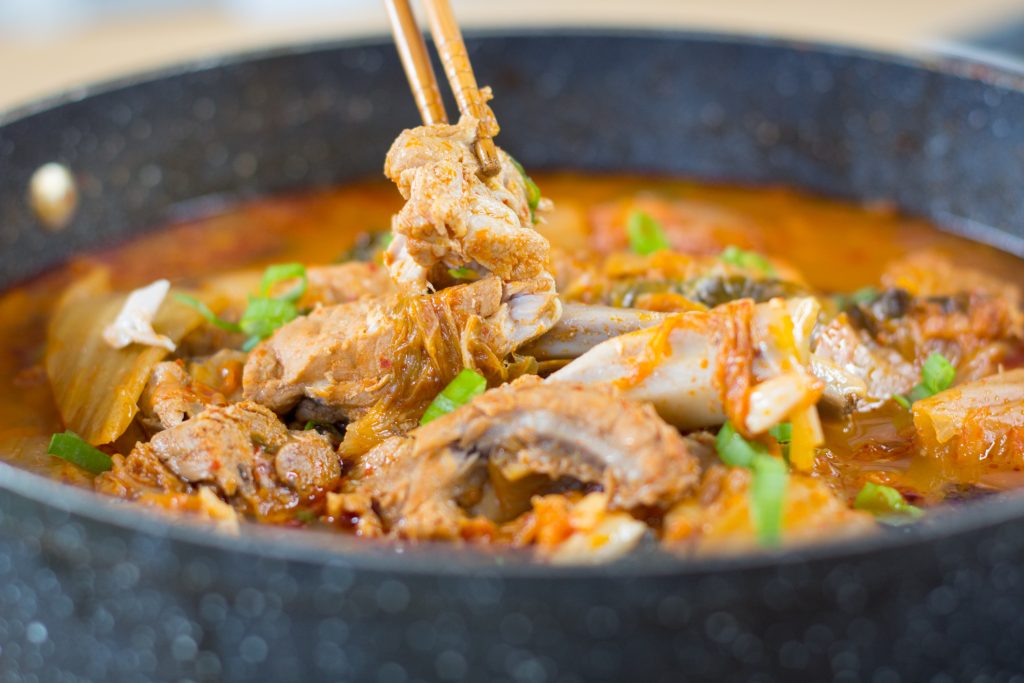
Back Ribs VS Spare Ribs
Self Exposed Secret: I studied Animal Science in college, and as part of our intro class, we had to learn different pork cuts available in the market. Did I still have to google the difference between the two to fact-check? You bet I did.
Here’s what I’ve re-learned: Back ribs are leaner and more tender than spare ribs, so they require a shorter cooking time. They’re taken from the upper rib cage, whereas the spare ribs are cut from the section below. Being higher in demand and found in smaller quantities, back ribs are also more expensive.
I wouldn’t disqualify spare ribs completely, as the fats, bones, and connective tissues surrounding the meat give a deeper and more robust flavor. I’ve made stews with both cuts, and they’re both equally delicious. Pick one that suits your needs and pockets!
Ripe Cabbage Kimchi? Is it different from the Kimchi in My Fridge?
There are many kinds of kimchi, but we’re mainly focusing on the cabbage variety. Kimchi can be consumed fresh when it’s just made OR allowed to ferment (ripen). When fresh, kimchi is crunchy and hard, like a freshly-made salad. Put it through the fermentation process, and the cabbage leaves will soften and produce a tangy, strong taste.
When buying kimchi from the grocery store, it can be challenging to figure out how far along it is in the fermentation stage. It might’ve been freshly made a few days before, which will not serve our purpose for this recipe. Look out for kimchi with a lot of liquid and cabbage that looks soft. If you’re still unsure, let the jar of kimchi sit in your fridge for a week, and you should be set to go!
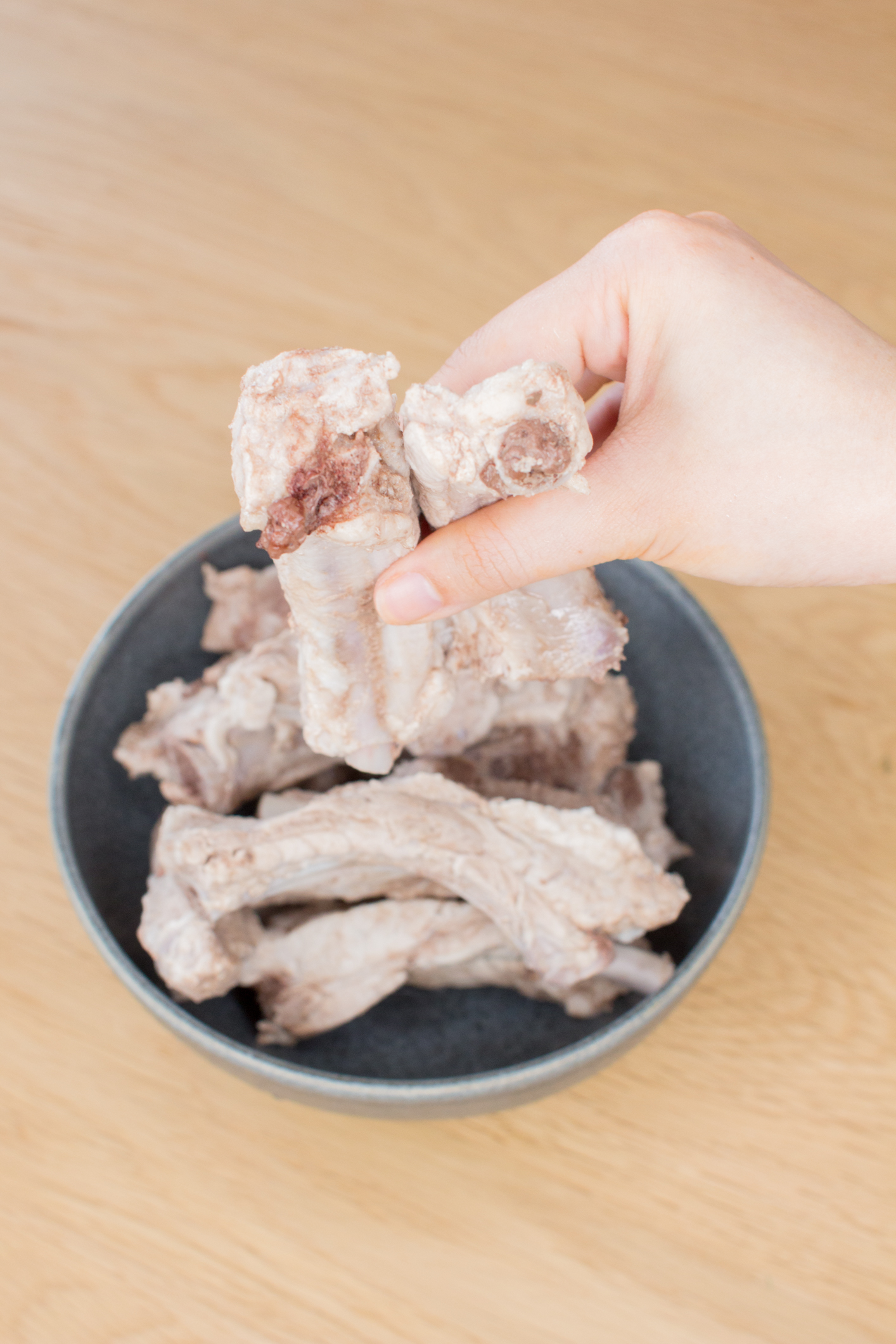
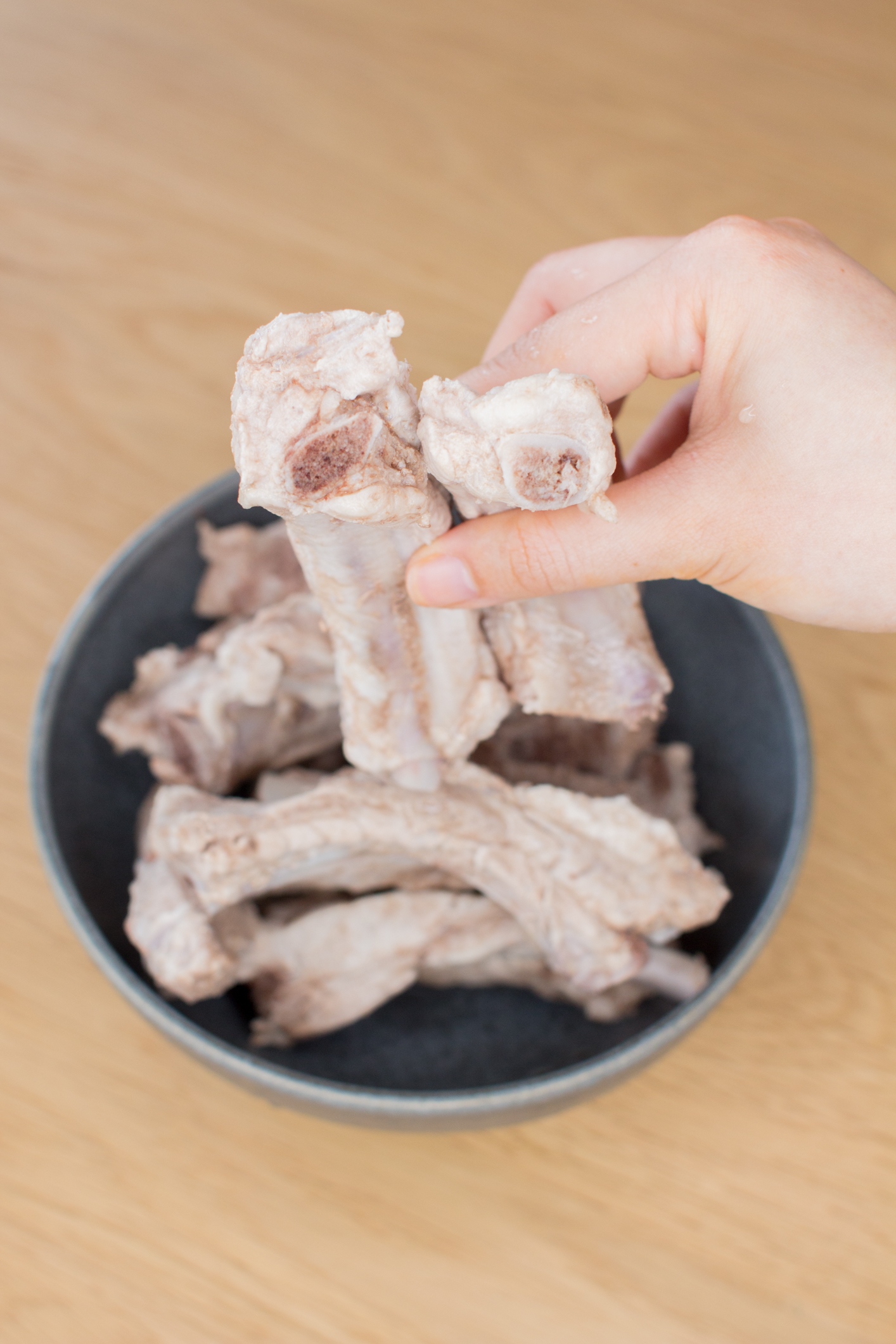
Boiling Pork Ribs Twice Seems Unnecessary, Until It’s Not
Trust the process and boil the ribs twice. I can almost hear the gasps in the room and complaints of potential flavor loss from the ribs. The purpose of the first boil is to cook and remove any excess blood in the bones. Make sure to wash the cooked blood and any other broken bits of bones away under cold water. This will result in a cleaner and less “gamey” taste at the end.
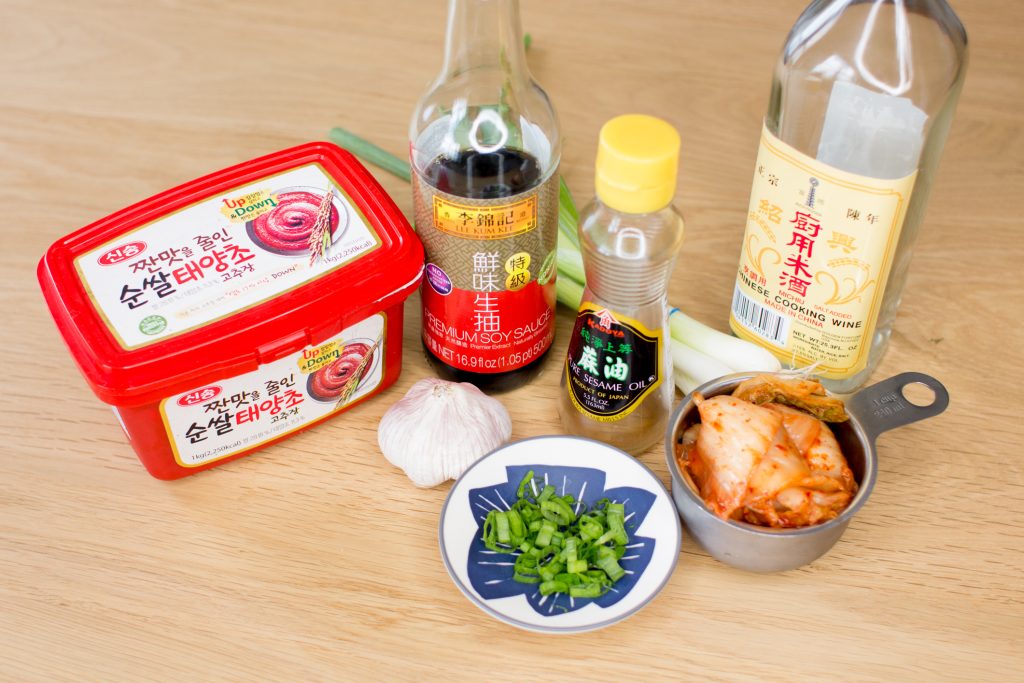
Gochujang = Yummy Umami Paste
Gochujang is one of the most essential ingredients in Korean cooking. I don’t know many popular Korean dishes that don’t use this fermented chili paste. Gochujang is sticky, salty, sweet, and spicy. However, don’t be deceived by its firey red color, as multiple heat levels are available, from mild to super hot! HMart is a great place to find various brands of gochujang, so take your pick.
Cooking with Clear Chinese Rice Cooking Wine: Safe for Minors?
Chinese cooking wine has a wide range of alcohol content between 18%-25% (varies among brands). I love adding Chinese rice wine to any meat dishes as it removes the “gamey” taste and gives any dish depth and flavor complexity. It’s also safe to cook with clear Chinese wine for minors, as all the alcohol will be cooked off.
Make sure to not confuse clear Chinese cooking wine with Shaoxing wine (dark reddish color)! I prefer using clear Chinese wine as it’s cleaner and “purer” in taste, making it easier for most beginners.
Enough Garlic to Ward Off An Entire Family of Vampires
Oh yes, there’s plenty of garlic in this stew! Rest assured, the long cooking time will mellow the strong garlic taste. Instead, it will give the stew a deep, robust flavor that will keep you coming back for more.
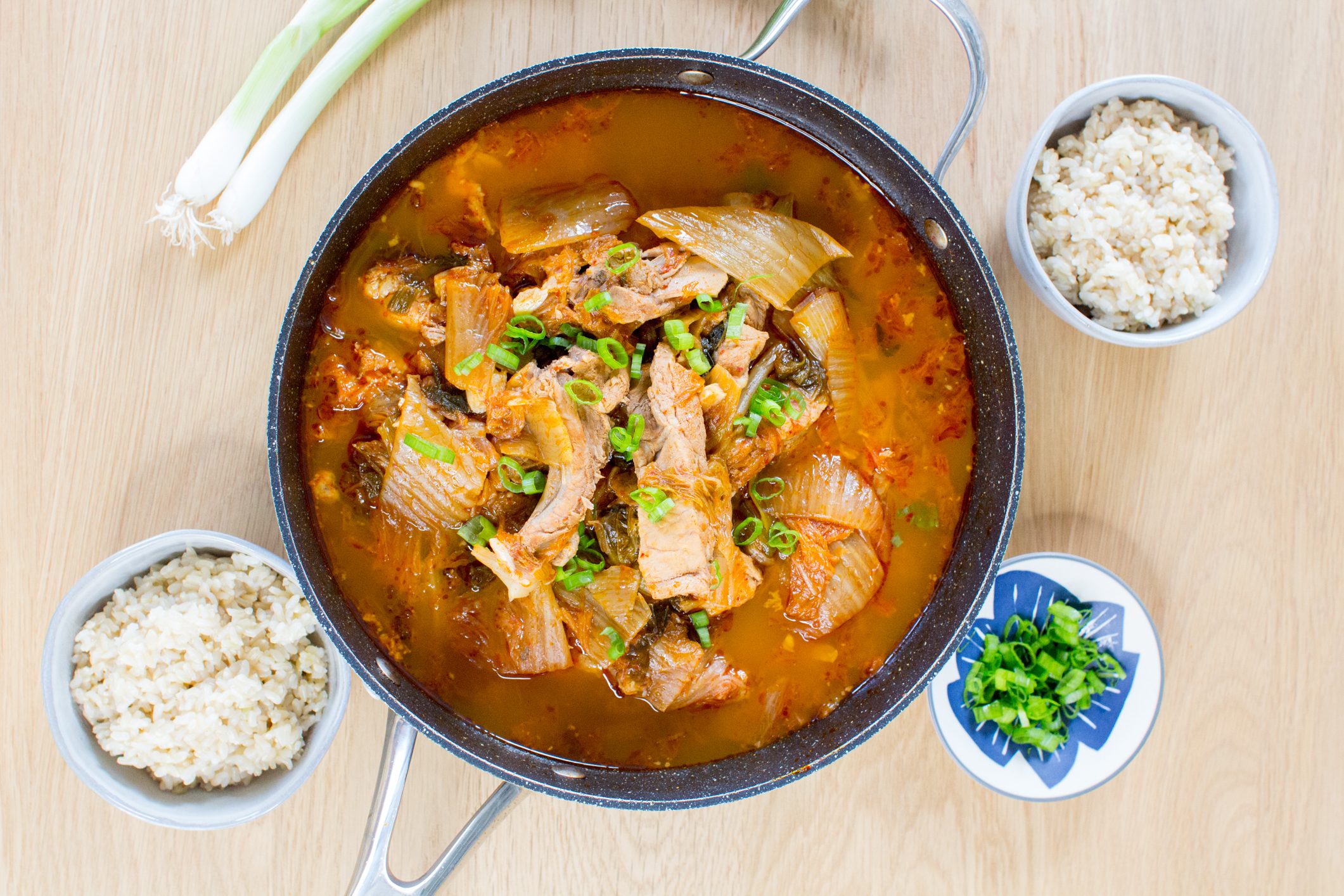
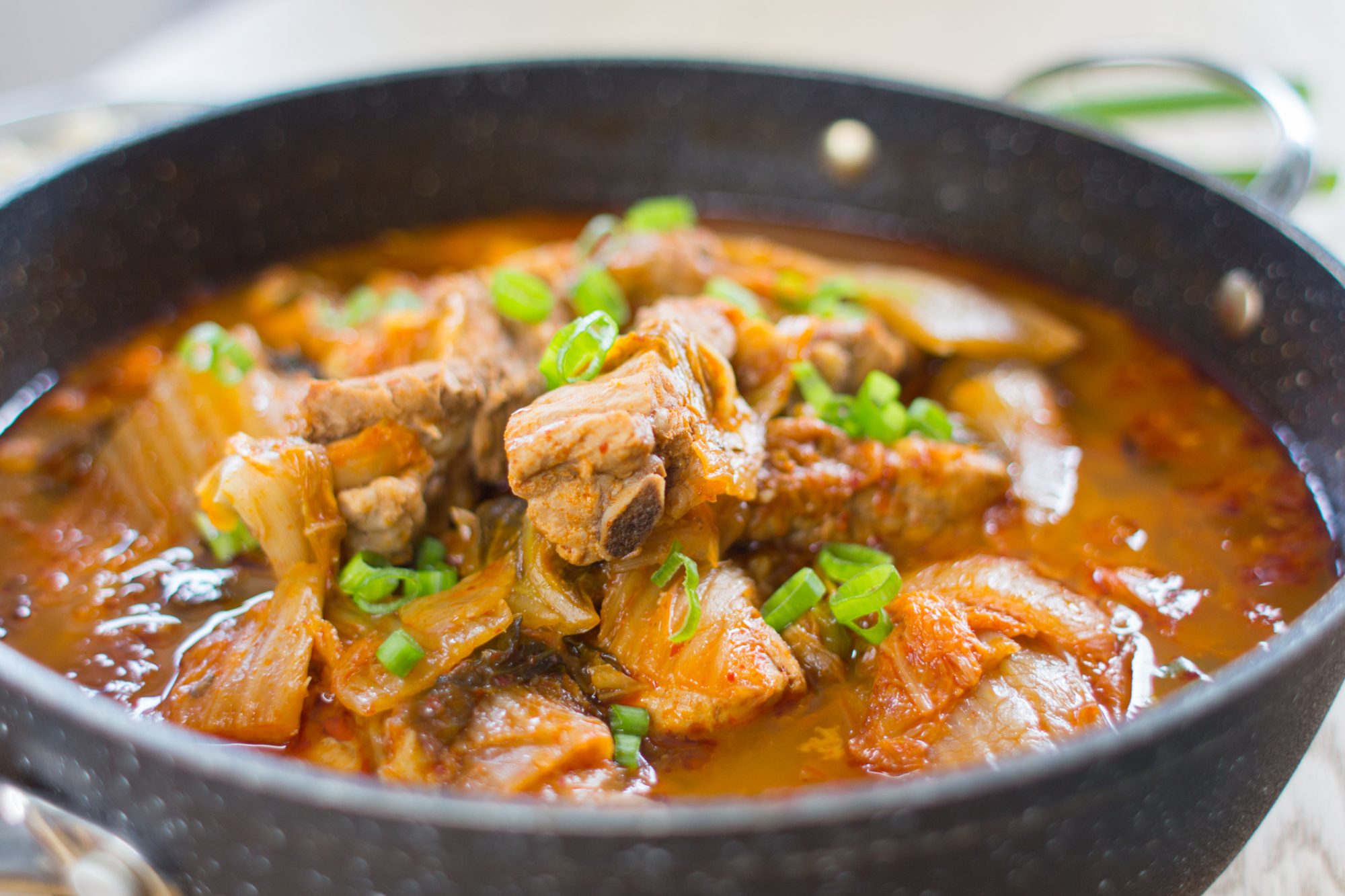
Place pork ribs in a pot, then add cold water until the ribs are just covered. Place pot on the stove and bring to a full boil over high heat (3-5min). Let boil for an additional 5 minutes uncovered.
Turn off the heat, drain all the water and rinse pork ribs under cold running water, making sure to remove all the “cooked blood” (scum) off the ribs.
Using a paper towel, wipe off leftover scum from the pot.
Place the pot back on the stove over medium-high heat and add vegetable oil. Add kimchi and sugar, and stir fry until there is no longer any excess liquid (refer to image above).
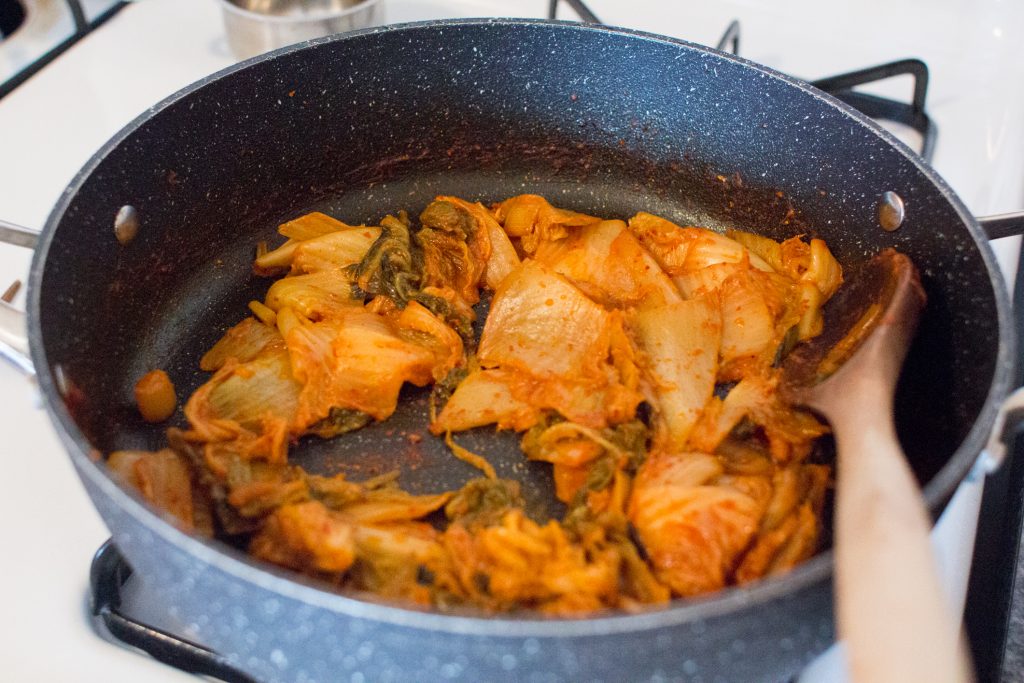
Transfer ribs back into the pot. Pour 5-6 cups of cold water to cover the pork ribs and kimchi.
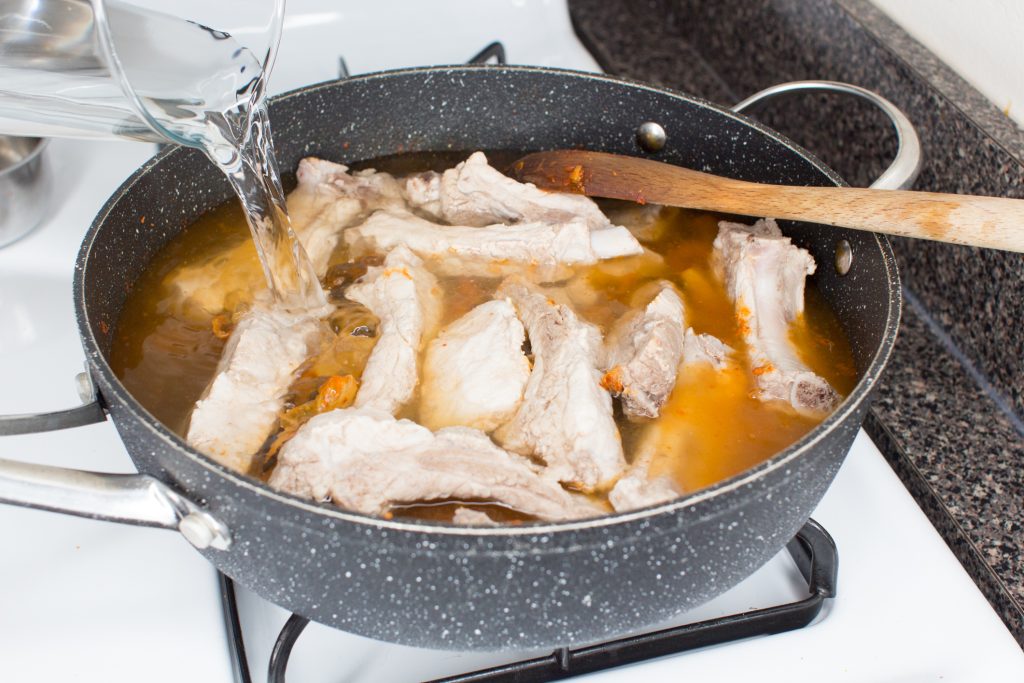
Add garlic, spring onions, rice cooking wine, gochujang, soy sauce, and sugar. Bring soup to a boil over high heat, turn it down low, cover the pot with a lid and simmer for 2 hours.
Season soup with sesame oil, soy sauce, and sugar (optional).
Garnish with chopped spring onions and serve with rice. Enjoy!
Ingredients
Directions
Place pork ribs in a pot, then add cold water until the ribs are just covered. Place pot on the stove and bring to a full boil over high heat (3-5min). Let boil for an additional 5 minutes uncovered.
Turn off the heat, drain all the water and rinse pork ribs under cold running water, making sure to remove all the “cooked blood” (scum) off the ribs.
Using a paper towel, wipe off leftover scum from the pot.
Place the pot back on the stove over medium-high heat and add vegetable oil. Add kimchi and sugar, and stir fry until there is no longer any excess liquid (refer to image above).

Transfer ribs back into the pot. Pour 5-6 cups of cold water to cover the pork ribs and kimchi.

Add garlic, spring onions, rice cooking wine, gochujang, soy sauce, and sugar. Bring soup to a boil over high heat, turn it down low, cover the pot with a lid and simmer for 2 hours.
Season soup with sesame oil, soy sauce, and sugar (optional).
Garnish with chopped spring onions and serve with rice. Enjoy!
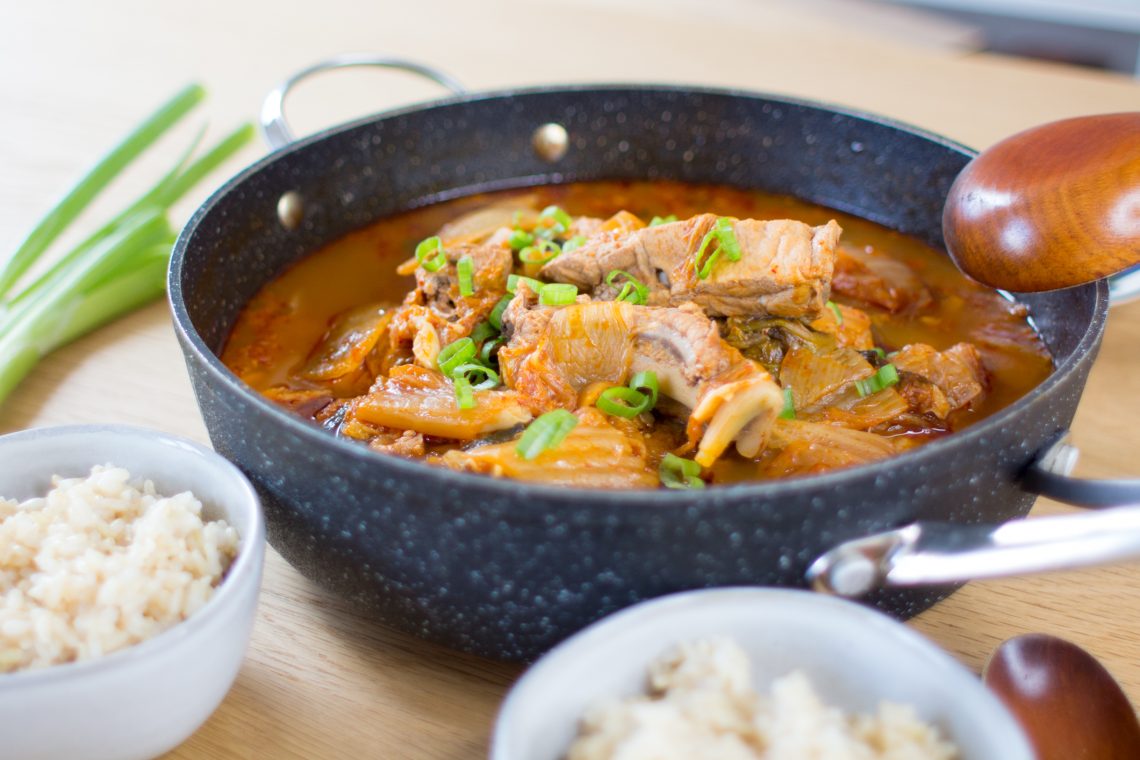
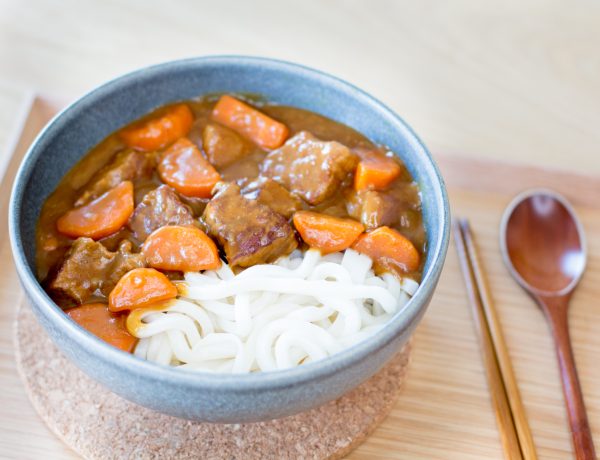
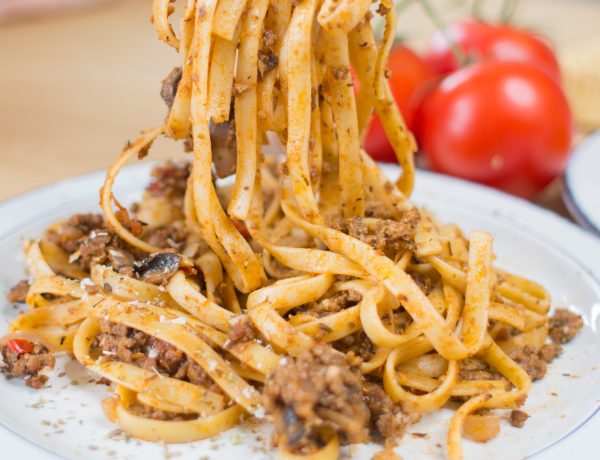
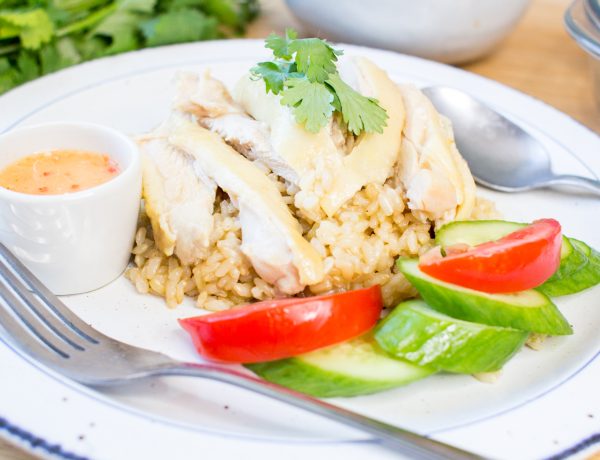
No Comments